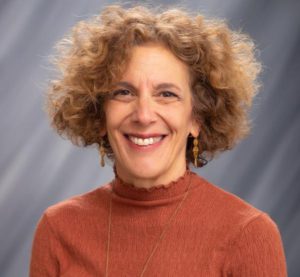Tagged: “Consequences of Forgiving”
Dr. Enright is sharing the good news of forgiveness in interviews across the world!

Dr. Robert Enright
Since our most recent post in May on this IFI News page, Dr. Robert Enright has had the following media interviews concerning different aspects of forgiveness:
Interview with Waldir Ochoa, ENTREVISTAS JIUMAN, Colombia, South America, on the topic of forgiveness, May 2, 2024.
Live interview with Dr. Michael Aronoff, Sirius XM, Doctor Radio, on the topic of forgiveness, June 25, 2024.
Interview with Gael Aitor and Kayla Suarez for Grown Kid podcast, July 12, 2024.
Interview with Malene Jensen, Weekendavisen newspaper, Denmark, on the topic of forgiveness, August 15, 2024.
Interview with Kari Knutson, University of Wisconsin-Madison Communications, on the topic of the Gallagher Brothers and the possibility of forgiveness, August 29, 2024.
Interview on the Radio Breakfast Show, Surrey, United Kingdom, on the topics of repentance and forgiveness, September 20, 2024.
Interview with Yowei Shaw, Proxy, an Apple podcast, on the topic of forgiveness, October 10, 2024.
IFI Researcher presents forgiveness intervention findings at recent New York conference
 Dr. Nahlah Mandurah, who is a researcher at our International Forgiveness Institute, presented her forgiveness intervention research with post-divorced women in Saudi Arabia this October at the Association for Moral Education in New York:
Dr. Nahlah Mandurah, who is a researcher at our International Forgiveness Institute, presented her forgiveness intervention research with post-divorced women in Saudi Arabia this October at the Association for Moral Education in New York:
Mandurah, N. & Enright, R.D. (2024, October 24). The effectiveness of a forgiveness intervention as a post-divorce program in Saudi Arabia. Paper presented at the Association for Moral Education annual meeting, Queens, New York.
On the Necessity for Forgiveness Education

Image by Pixabay, Pexels.com
When I first started to study forgiveness as a possible scientific topic, I was surprised to find no empirically-based publications on the topic of person-to-person forgiving. There were studies on apology and some non-empirical publications regarding forgiveness in therapy, but none examining forgiving with the use of statistics. In other words, psychological science, as supposedly centered on a helping profession, managed to avoid the scientific investigation of forgiving since the late 19th century. Such neglect was not due to the irrelevance of forgiving, but instead to psychological scientists failing to have sufficient insight to see the relevance of this topic for their profession.
All this has changed since the first empirically-based forgiveness publication appeared in 1989 (Enright, Santos, & Al-Mabuk, 1989).
Now there are thousands of research articles from a wide variety of scientists showing the relevance of forgiving for well-being after the person has suffered the negative effects of unjust treatment by others (Akhtar & Barlow, 2018; Enright & Fitzgibbons, 2024).
We now are faced with an analogous situation with regard to the implementation of forgiveness education. This is not an exact parallel situation with the empirical science of forgiving because much science on forgiveness education already has been done (Rapp et al., 2021). Instead, the issue centers on the implementation of forgiveness as an important component of elementary school, middle school, and high school education. The science of forgiveness education has been summarized by Rapp et al. (2021) with this conclusion: When 1,472 students across 10 countries have undergone forgiveness education, there is a statistically significant cause-and-effect association between engaging in forgiveness education and increasing a student’s level of forgiveness toward someone who acted unfairly as well as a reduction in anger in general. In other words, learning about forgiveness and its process can induce more forgiving in the human heart and reduce anger that could have been displaced onto others in the family or the classroom.
We should consider the need for universal forgiveness education by reflecting on this question: What is the main purpose of education? It seems that the answer is this: Education is supposed to help students prepare for adulthood by learning to read, do addition and subtraction so they can keep track of funds and other important inventories, and be cooperative members of society.
Yet, education almost never asks teachers to prepare students for the deep injustices that likely will visit them as adults. Here is one example I encountered: A 35-year-old woman was unexpectedly faced with her husband abandoning her and their two young children. She told me that she now has to find a job and continue raising the children alone as she confronts the rising anger and mourning that have befallen her. “I want to forgive,” she told me, “but I do not know how.”
What if this woman had forgiveness education as a child and adolescent? She now would be ready to forgive, to reduce her rising anger, to have more energy, and to raise her children with more focus. Forgiveness education would have prepared her for this.
Is learning how to read, to balance a checkbook, or to know the capital of Madagascar the only kind of preparation we should be giving children? Should we be expanding our vision of education, as we have with psychological science, to now make room for forgiveness education in the classroom?
It is time. It is more than time because it is long past time that forgiveness is seen as necessary for good preparation in being a thriving adult.
References
Akhtar, S. & Barlow, J. (2018). Forgiveness therapy for the promotion of mental well-being: A systematic review and meta-analysis. Trauma, Violence, & Abuse, 19(1), 107-122.
Enright, R.D. & Fitzgibbons, R.P. (2024). Forgiveness therapy. APA Books.
Enright, R. D., Santos, M., & Al-Mabuk, R. (1989). The adolescent as forgiver. Journal of Adolescence, 12, 95-110.
Rapp, H., Wang Xu, J., & Enright, R.D. (2022). A meta-analysis of forgiveness education interventions’ effects on forgiveness and anger in children and adolescents. Child Development, 93, 1249-1269.
![]()
How can educators empower students to solve conflict with forgiveness?

Dr. Suzanne Freedman
Dr. Suzanne Freedman, a professor of human development and interpersonal forgiveness at the University of Northern Iowa and longtime team member of the IFI, recently gave an interview to an education website on how forgiveness can be helpful in conflict resolution among children and youth.
Check out the story by clicking on this link!
A Call for Corrections to Truly Engage in Correction for Those Imprisoned
I must admit to being surprised by the reaction of so many administrators of correctional institutions. Here is what I mean. I know of three different groups, with many years of experience in the science of forgiveness, that recently have contacted corrections officials to request research programs to aid imprisoned people, who have been treated unjustly in the past, to learn to forgive so that their resentment can be reduced. With their reduced resentment, those imprisoned who have been beaten down in the past may be less likely to displace that rage onto others. Yet, the three different groups mentioned above have been rejected or at least met with ambivalence when requesting, at no charge to the institution, forgiveness programs for the inmates. This negative reaction has occurred in a country in Western Europe, in an Asian country, and in the United States. In each case, trained personnel outside of the institution would implement the forgiveness programs. Further, trained personnel outside the institution would give the pretest and post-test questionnaires so that only a very limited amount of time would be required by any of the professionals within the institution. Yet, the rejections and ambivalence remain.
It seems, and to me this is a tragedy, that those in charge, who could say yes to such forgiveness programs, just do not see the importance of such rehabilitation. We do have scientific evidence that such forgiveness programs work well in correctional institutions when we are given the chance to implement them. You can read about this success here in an earlier blog on this website:
All is not negative in this case of corrections. We are communicating with researchers in Brazil, Spain, and Israel who are interested in helping the imprisoned or those recently released. The voice of one released and who engaged in a forgiveness program has been captured on film from an international conference in July of 2022. His name is Sylvester Jackson. Take a look at his testimony and then ask yourself: Is it time for corrections administrators to see this new approach and welcome it for the sake of the imprisoned and all who could fall victim to their rage?
It is time.
![]()



